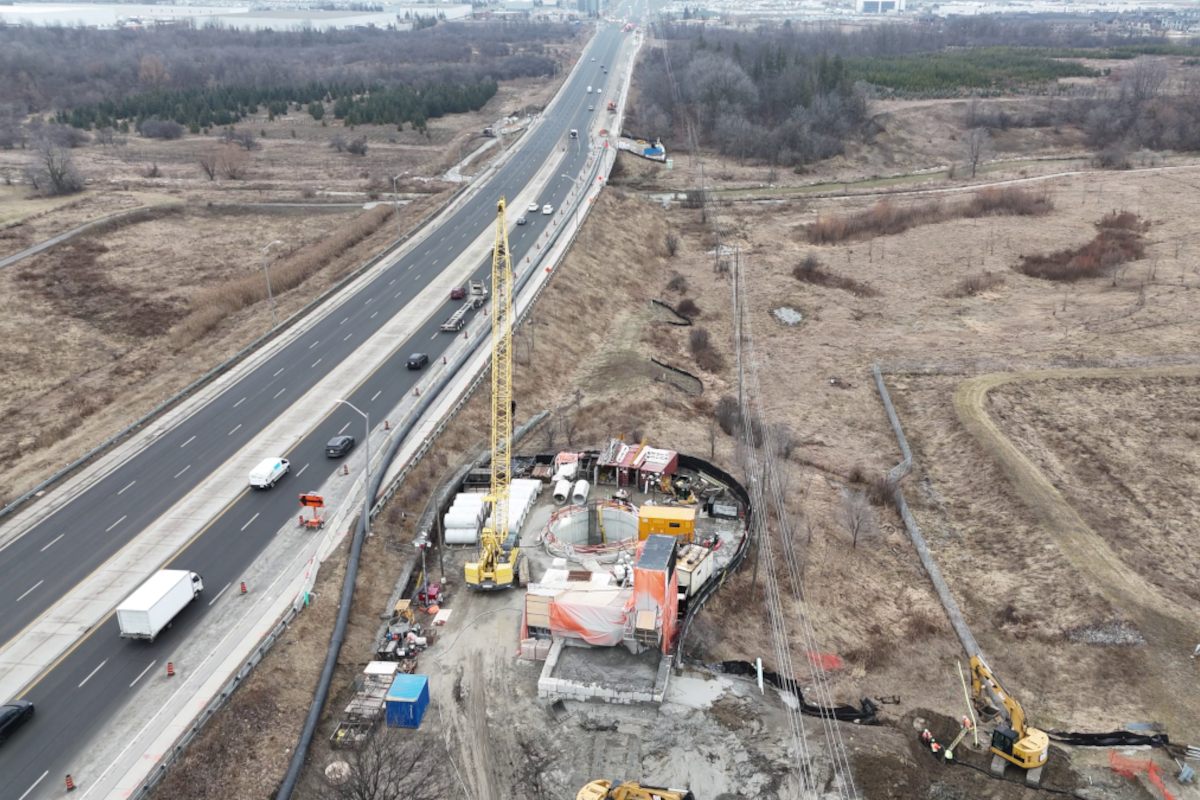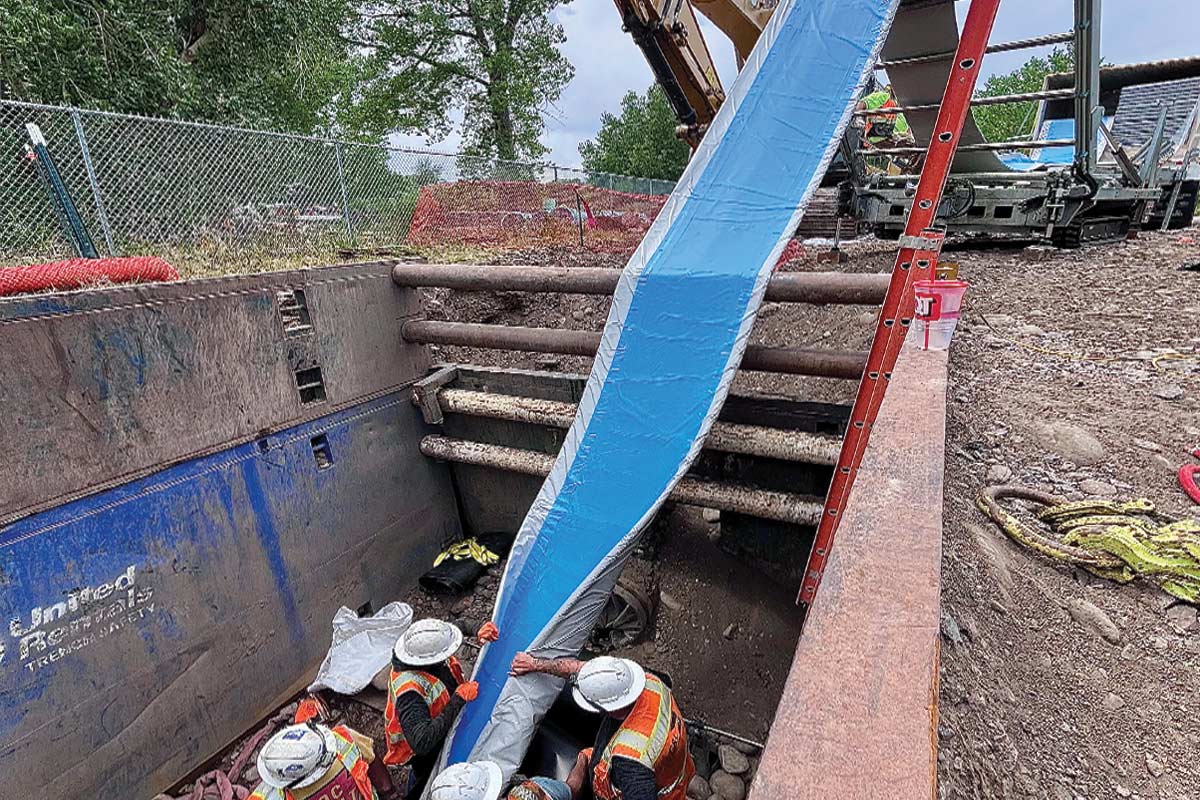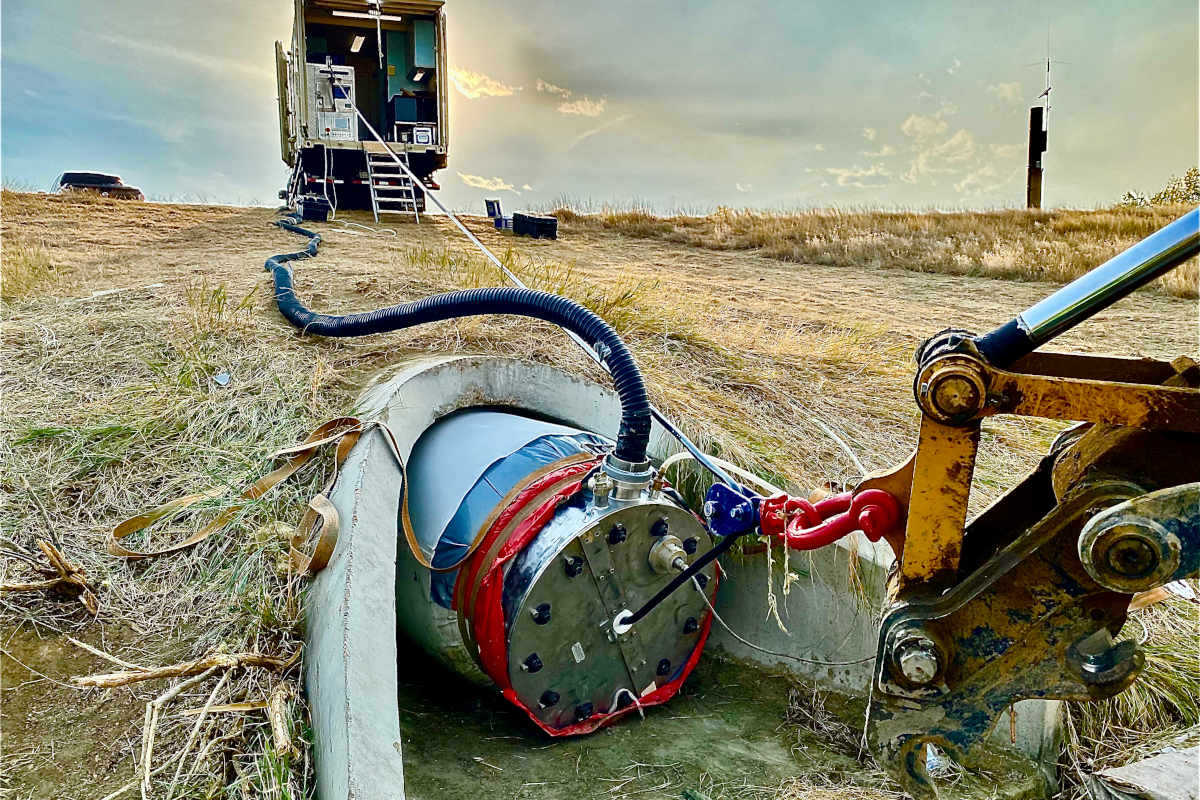
Trenchless Under I-70: ODOT Project Calls for Saertex’s Largest UV Liner
January 22, 2016
For a state department of transportation, trenchless rehabilitation methods are a no-brainer considering cost benefits, and more importantly, the traffic nightmares caused by open-cut construction.Such was the case in 2015 when Ohio Department of Transportation (ODOT) District 5 looked at rehabilitating several sections of culverts that transported stormwater under Interstate 70, a major highway that runs from Columbus through the heart of the seven-county ODOT district in Southeastern Ohio.
“One of our main goals as a department is to not impact traffic any more than necessary,” says Peg Hatem, ODOT District 5 area construction engineer. “These [trenchless] methods allow us to do the work essentially without impacting traffic at all, depending on the location.”
If the department deemed open-cut the necessary solution, based on traffic counts for this stretch of I-70, most of the work would have to be nighttime work. In addition, the district would have to look at the added cost of switching traffic over to share the same side of the highway to allow for the trenching and installation of the new culvert.
One Project, Multiple Solutions
Bryan, Ohio-based Advanced Rehabilitation Technology (ART) was subcontracted to spray-coat a pair of the corrugated metal pipes with HydraTech PolySpray. According to Hatem, the spray-applied liner is generally more cost-effective when rehabilitating culverts 48 in. and larger in diameter.
ART was able to use the HydraTech PolySpray on one of the culverts — a pipe that measured 7.5 ft tall and was 14 ft wide at the bottom — with positive results. The PolySpray provides a durable 1/3-in. thick coating that helps maintain the pipe’s hydraulic capacity compared to other rehabilitation methods.
The second culvert — a 42-in. diameter, 560-ft pipe, off Claysville Road in Cambridge — posed a challenge for the ART crew. Gary Mock, product manager for ART, notes that applying the spray liners requires man entry and while a 42-in. pipe is doable at 60 ft, when the pipe is close to 600 ft, the story changes.
“That particular corrugated metal pipe was a concern at the pre-construction meeting because of the length and smaller diameter. When it’s close to 600 ft long, it becomes a safety concern,” Mock says. “When someone is a football field away in a 42-in. pipe, making sure ventilation requirements are met is very difficult. So, because of those dynamics, in conversation with Shelly and Sands [the general contractor] and ODOT, we felt it would be better to go with a cured-in-place pipe (CIPP) option.”
“The existing pipe was bituminous-coated and the spray-on liner must be blasted clean in order to adhere to the metal,” Hatem adds. “It did not seem like a reasonable solution. It wasn’t going to be a great process for anybody to have to get in there and deal with cleaning it and getting it to the condition where it would have to be.”
The CIPP Alternative
Through pre-construction discussions with ODOT District 5, Shelly and Sands, and ART, it was determined that due to environmental concerns, as well as access to the culvert, the best solution to the problem was relining the culvert using ultra violet (UV) CIPP. Having worked with CIPP installers in the past, ART turned to Insight Pipe Contracting L.P., of Harmony, Pa.
Because UV-cured liners do not require steam or water for curing, this was the ideal solution for the stormwater culvert, which outfalls to a stream and pond.
“Access to the upstream headwall was from a private residential driveway and we had to keep that in mind when deciding what product we would use to rehab the pipe,” Says Derek Offutt, Insight Pipe Contracting operations manager. “It was obviously not something we could take a lot of large equipment into.”
When the project calls for UV CIPP, Insight Pipe Contracting, a Premier-Pipe USA installer, turns to Saertex multiCom.
“Due to the fact that our liners are pre-manufactured in our ISO 9001 factory and then shipped directly to the project ready to install, dimensions and weight can limit the magnitude of liners we can manufacture. For this project we were pushing those limits,” says Mark McClymonds, Saertex sales manager. “Fortunately we have very experienced production teams and state of the art plants in Germany and North Carolina and they figured it out and went on to manufacture it.”
By McClymonds’ estimate, the 12-mm thick, 42-in diameter liner weighed approximately 34,400 lbs. Because UV liners are crated rather than wetted out and placed in a refrigerated truck, the weight of the crate was also a consideration.
At 583 ft long (trimmed to 568 ft when installed), the liner marks one of the largest (and heaviest) Saertex UV liners installed in North America.
Offutt notes that, in hindsight the fact that this was a milestone installation is something Insight Pipe Contracting can smile about, but during the project, the sole focus was on successfully putting the pipe in the ground.
“We were approached to find a solution to the problem and that was our No. 1 goal. We sat down collectively to determine what the best method was to rehabilitate the pipe. We chose one of the tools available to us in the toolbox and that’s a Saertex UV liner,” Offutt says. “We consulted with Saertex to see if it was a viable option for this project and they provided a lot of support, including on-site support at the job. It was a great example of a collective effort in finding a solution to a problem.”
Insight Onsite
Insight Pipe Contracting, Saertex, and Shelly and Sands worked together to prep and plan the project to ensure it would move along as smoothly as possible. Shelly and Sands prepped the construction area on both the headwall and downstream sides of the pipe.
On the upstream side, the Insight Pipe Contracting crew built a ramp that acted as a slide so the Saertex liner could be pulled from the truck through the culvert, without having to erect a tower. The downstream outfall was about 400 ft over a wooded embankment and Insight Pipe Contracting had to navigate a winch to that section so it could pull the liner through the host pipe.
“The weight of liner was a challenge. We chose to take liner from its shipping crate and load it into one of our trucks with the roller system to install it easier and allowed us to not have to use the crane onsite,” Offutt says. “Without proper planning, nothing is not going to go how you like it. I’d like to think that with any method we would have chosen, we would have gotten it done diligently because of the planning that we put into it.”
Site prep began Aug. 31, with installation taking place Sept. 1 and by the afternoon of Sept. 2, the UV-lined pipe was cured, inspected and returned to service. All parties involved from ODOT to Insight Pipe Contracting and Saertex, are pleased with how the project went.
“Once the liner was in place it took 14 hours to cure. Including the set up time it took from 10 a.m. Monday morning [Aug. 31] to noon on Wednesday [Sept. 2] to install approximately 580 ft, of 42-in., in 48 hours. That’s pretty good, given the difficult access and set up logistics,” McClymonds says.
In addition to the project being one of the largest Saertex liner installations in North America, it also marked ODOT District 5’s first use of CIPP. Hatem notes that since this project took place, ODOT District 5 has used CIPP on a project at Salt Fork State Park.
“Everything seems to have gone well with both types of liners,” she says. “Overall as a department we are happy with the alternatives that have been presented to us.
Mike Kezdi is associate editor of Trenchless Technology.




